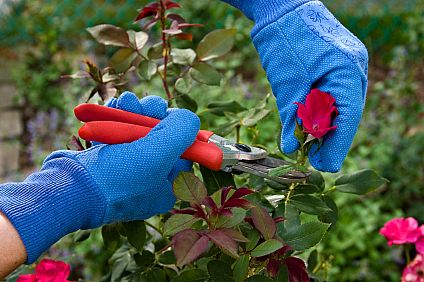
Why Is It Important To Prune Your Plants?
Pruning is the physical act of trimming branches, leaves or dead matter from a plant. Typically this is done to make the plant look more attractive or to help keep it healthy. Horticultural experts and landscapers generally agree that pruning is carried out for one (or more) of four different reasons: Training the Plant, Maintaining the Plant’s Health, Improving Flower / Fruit Quality and to Restrict Growth. With this entry we’ll take a brief look at each of these reasons.
Training the Plant: To keep a tree or shrub to a specific size or shape, it must be regularly pruned. The initial pruning of young trees or shrubs normally consists of removing broken, crossing, or any pest-infested branches. When pruning trees, the rule of thumb is to cut away 1/3 of the top growth during transplanting. This will compensate for root loss, a technique which is not necessary for properly pruned, nursery-grown plants. Excessive pruning at transplanting, according to research, reduces ultimate plant size and does not aid in plant survival. As a rule, the central leader of a tree should not be pruned unless a leader is not wanted, as is the case with some naturally low-branched trees or where multiple-stemmed plants are desired. Some pruning may be necessary to maintain desired shape and shorten extra-vigorous shoots.
Maintaining Plant Health: To prune a plant for health reasons first consider sanitation, which includes the elimination of all dead, dying, or diseased wood. Any dying branch or stub can be the entry point or build-up chamber for insects or disease that could spread to other parts of the plant, with devastating results. When removing diseased wood such as a fungal canker or fire blight, it is important that the cut be made in healthy wood, beyond the point of infection and always with a sterile blade. The development of a sound framework through proper thinning will help prevent disease and loss of vigor while maintaining good form. Even evergreen shrubs will usually benefit from an occasional thinning of foliage. This thinning will allow penetration of light and air throughout the shrub, resulting in an even growth of the foliage.
Quality of Flowers/Fruit: The more flowers and fruit a plant produces, the smaller they become, as can be seen on a rose bush or fruit tree that has been left to its own natural devices. Pruning reduces the amount of wood and so diverts energy into the production of larger, though possibly fewer, flowers and/or fruit. Most flowering shrubs will bloom either on one-year old growth or on new growth. Properly timed pruning will increase the production of wood that will bear flowers. Some deciduous shrubs have colored barks which are especially delightful in winter. The best color is produced on young stems; the greatest stem length and most intense color results from hard pruning.
Restricting Growth: Over time, trees and shrubs will often grow to sizes that exceed the space allowed for them. Where space is limited, regular pruning becomes necessary to keep plants in bounds. Regular pruning is necessary on formal hedges to maintain a uniform growth rate. To reduce labor, select plants that will not exceed allotted space. A subjective thing, the gardener will maintain plant growth (such as with a hedge) to the size and shape best suited to their individual tastes or to the character of the lot. An extreme example of pruning to restrict size would be the traditional Japanese Bonsai Tree. Examples of these living art forms can remain in diminutive pots, yet are literally hundreds of years old. These elegant trees are testament to the skills and dedication of the artists who devoted so much energy and creativity to their appearance over the years.
If uncertain about your pruning requirements or needs, it’s always advisable to check with professional landscapers, such Lush Eco Lawns, to ensure the maximum benefit is achieved for your efforts.
